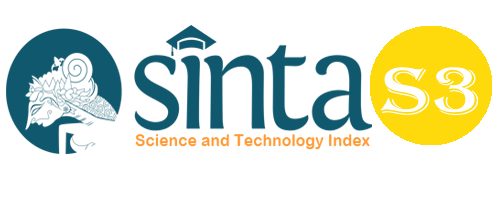Do Behaviour and Culture of Occupational Health and Safety (OHS) Matter for the Effectiveness of OHS Programs and Policies in Indonesia? (Empirical Evidence from City of Garut)
Abstract
This study tries to investigate whether Occupational, Health, and Safety (OHS) behaviour and culture can influence the effectiveness of OHS programs and policies. The author used a qualitative methodology where the collection of data is generated through interviews and direct field observations in 40 companies at the City of Garut. This study found that OHS has been implemented both through the diffusion and the adoption of policies and programs, as well as various implementation techniques. However, the background and motivation for implementation were still caused by things that were instrumental, formal, and fragmented in nature. Therefore, OHS value should be intrinsic to each member of the organization and must be agreed as a shared value. Such an argument endorses an important role of a leader in the company, where one of his or her main tasks is to transform individual values into collective values in the form of safety culture.
Keywords
Full Text:
PDFReferences
Blewett, V., & Shaw, A. (1996). Telling Tales : OHS and Organizational Culture. Journal of Occupational Health and Safety - Australia and New Zealand, 12(2), 185-191. Retrieved from https://search.informit.com.au/documentSummary;dn=961009927;res=IELAPA
Cooper, D. (2001). Improving Safety Culture: A Practical Guide. London: John Wiley & Sons Ltd.
Digdowiseiso, K., Sugiyanto, E., & Djumadin, Z. (2018). Implementation of Irrigation Policy in the Decentralized Government: A Case Study of West Java, Indonesia. Journal of Environmental Management and Tourism, 9(3), 411-422. Retrieved from http://repository.unas.ac.id/323/
Douglas, M. (1986). How Institutions Think. New York: Syracuse University Press.
Edwards III, G.C. (1980). Implementing Public Policy. Washington D.C.: Congessional Quarterly Press.
Flippo, E.B. (1984). Personnel Management. New York: McGraw-Hill.
Geller, S.E. (2001). Keys to Behavior Based Safety: From Safety Performance Solutions. Maryland: ABS Consulting.
Gordon, J.R. (2001). Organizational Behavior: A Diagnostic Approach. Boston: Prentice Hall.
Hoogerwerf, A. (1983). Ilmu Pemerintahan. Jakarta: Erlangga.
Jones, R.A., Jimmieson, N.L., & Griffiths, A. (2005). The impact of organizational culture and reshaping capabilities on change implementation success: The mediating role of readiness for change. Journal of Management Studies, 42(2), 361–386. https://doi.org/10.1111/j.1467-6486.2005.00500.x
Kabanoff, B., & Holt, J. (1996). Changes in the espoused values of Australian organizations 1986-1990. Journal of Organizational Behaviour, 17(3), 201-219. https://doi.org/10.1002/(SICI)1099-1379(199605)17:3<201::AID-JOB744>3.0.CO;2-9
Kilmann, R.H., & Saxton, M.J. (1983). Kilmann-Saxton Culture Gap Survey. New York: Organizational Design Consultants.
Latour, B. (2007). Reassembling The Social: An Introduction to Actor-Network Theory. New York: Oxford University Press.
Mathis, R.L., Jackson, J.H., & Valentine, S.R. (2013). Human Resource Management. Nashville: South-Western College Pub.
Meter, D.V., & Horn, C.V. (1975). The Policy Implementation Process: A Conceptual Framework. Administration and Society, 6(4), 445 – 488. https://doi.org/10.1177%2F009539977500600404
Nelson, L. (1994). Managing Managers in Occupational Health and Safety. Asia Pacific Journal of Human Resources, 32(1), 13-28. https://doi.org/10.1177/103841119403200102
Niati, D. R., Siregar, Z. M. E., & Prayoga, Y. (2021). The Effect of Training on Work Performance and Career Development: The Role of Motivation as Intervening Variable. Budapest International Research and Critics Institute (BIRCI-Journal): Humanities and Social Sciences, 4(2), 2385–2393. https://doi.org/10.33258/birci.v4i2.1940
Pascale, R.T., & Athos, A.G. (1981). The Art of Japanese Management. New York: Simon & Schuster.
Quinlan, M., Bohle, P., & Lamm, P. (2010). Managing Occupational Health and Safety : A Multidisciplinary Approach. Victoria: Palgrave Macmillan.
Ritti, R.R., & Funkhouser, G.R. (1982). Ropes to Skip and the Ropes to Know. New York: John Wiley & Sons, Inc.
Rogers, E.M. (2003). Diffusion of Innovations. New York: Free Press.
Schneider, B. (2013). Organizational Climate and Culture. New Jersey: Pfeiffer.
Solichin, A.W. (1997). Analisis Kebijaksanaan: Dari Formulasi ke Implementasi Kebijaksanaan Negara. Jakarta: Bumi Aksara.
Stone, R.J. (2013). Human Resources Management. Queensland: John Wiley & Sons Australia Ltd.
DOI: https://doi.org/10.33258/birci.v5i1.3781
Article Metrics
Abstract view : 46 timesPDF - 26 times
Refbacks
- There are currently no refbacks.

This work is licensed under a Creative Commons Attribution-ShareAlike 4.0 International License.

This work is licensed under a Creative Commons Attribution-ShareAlike 4.0 International License.

_.gif)

















_.gif)



